My god, it’s April. As I look back through my archive of written material, one of the takeaways is that Commander 2017 was a very good set for sparking ideas for decks, to the point where there are generals I meant to dive into at some point that just got lost in the shuffle of everything else that goes on. This really puts into perspective the weeks where I panicked to find a topic of conversation, as the suite of generals premiering in last year’s expansion were extremely viable topics. This week I wanted to take a look at the Vampire deck to cover a general other than Edgar Markov—the best Vampire Tribal general depending on who you talk to—and try to forge a path that isn’t entirely made to be Vampire Tribal. Between my options of Mathas, Fiend Seeker and Licia, Sanguine Tribune I saw more inspiration in Licia as something I haven’t seen yet in Mardu and I think should be on people’s radar. I’m going to channel the spirit of the Souls Sisters deck—best known in the Magic 2011 Standard and recent Modern—in Commander, hopefully to grand effect.
Licia, Sanguine Tribune
Directly from Wizards: Licia is an army general renowned for her ruthlessness in battle. She wields dual swords stained with the blood of countless victims, including the enchanted blood of an angel, whose feathers Licia wears in her helmet as a symbol of her supremacy. Basically, for those who didn’t know, her lore is pretty awesome. And while many legendary creatures use lifelink to their advantage—especially vampires—I like the tension that arises as you pay life to make your general stronger and how methods of life gain itself is linked to getting your general into play.
This is where the idea of building a shell in the spirit of a Soul Sisters deck comes into play, something I had not considered as I analyzed each general back in August. As my past attempts to mimic competitive format decks have proven that a singleton format does not always deliver enough consistency. I am not aiming to construct a deck that wins the same way the inspiration does, but capture some of the themes in a way that plays well in Commander. Soul Sisters is traditionally a mono-white deck, a concept I’m not sure can be supported in Commander under that exact color identity, but I am certain can work with the addition of other colors. I have to imagine that granting a core Orzhov team haste, trample, and/or double strike will make for an impressive threat. The goal of this deck is gaining life in meaningful chunks without raising any flags, such as regularly being at 100+ life, but just enough to never be at risk of dying to anything other than commander damage. Life is a resource we’ll be using and we want to be able to replenish it like we might our hand size or board presence.
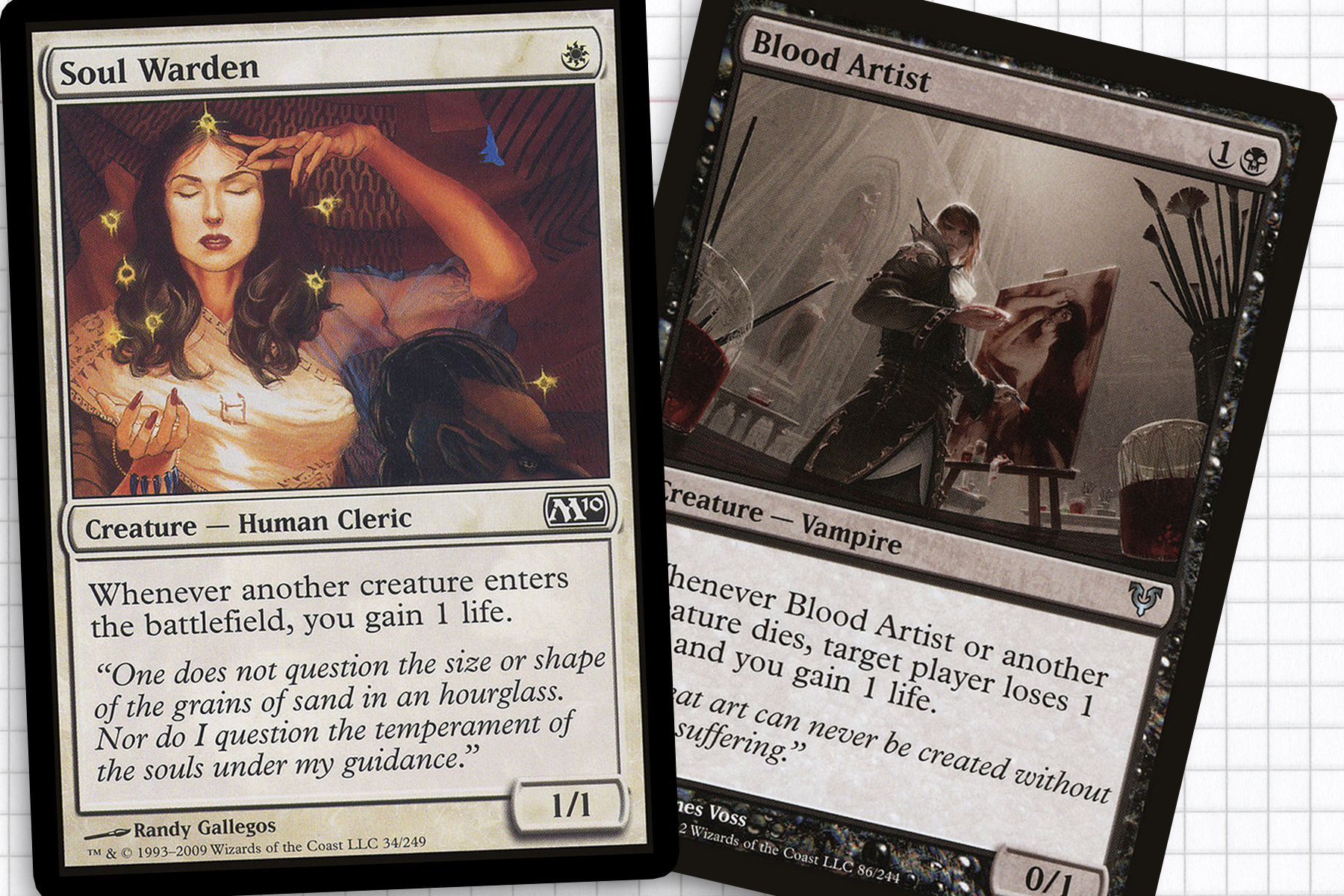
I Got Soul and I am a Soldier
The first step is porting over elements of the Standard/Modern deck that make sense of the deck, this includes Soul’s Attendant, Soul Warden, and Suture Priest all acting a creatures that trigger an ability when a creature enters the battlefield. Another key piece will be Serra Ascendant, which requires no work in Commander to meet the criteria on turn one, meaning we have a 6/6 lifelink and hopefully our general by turn three. In the past I have heard that this is an unfair advantage on turn one and that some “Commander errata” should be done to change the criteria on cards like this or Felidar Sovereign, but I am inclined to disagree on the basis that in a multiplayer game the advantage is pretty mitigated to the point where the Ascendant only makes you die slower and the Sovereign is good but often answered by someone at the table.
With the addition of black we can also include Blood Artist, Falkenrath Noble, and Zulaport Cutthroat as a way to make creature leaving the battlefield as beneficial as when they entered. While this won’t often prevent people from playing their Wrath of God or Decree of Pain, it does produce value in a situation where you might be losing your creatures. Rounding off the list of life gain tricks, I would consider a few of the Extort creatures, like Pontiff of Blight, Vizkopa Confessor, or even Syndic of Tithes, to help syphon life points from the rest of the table with every spell you cast.
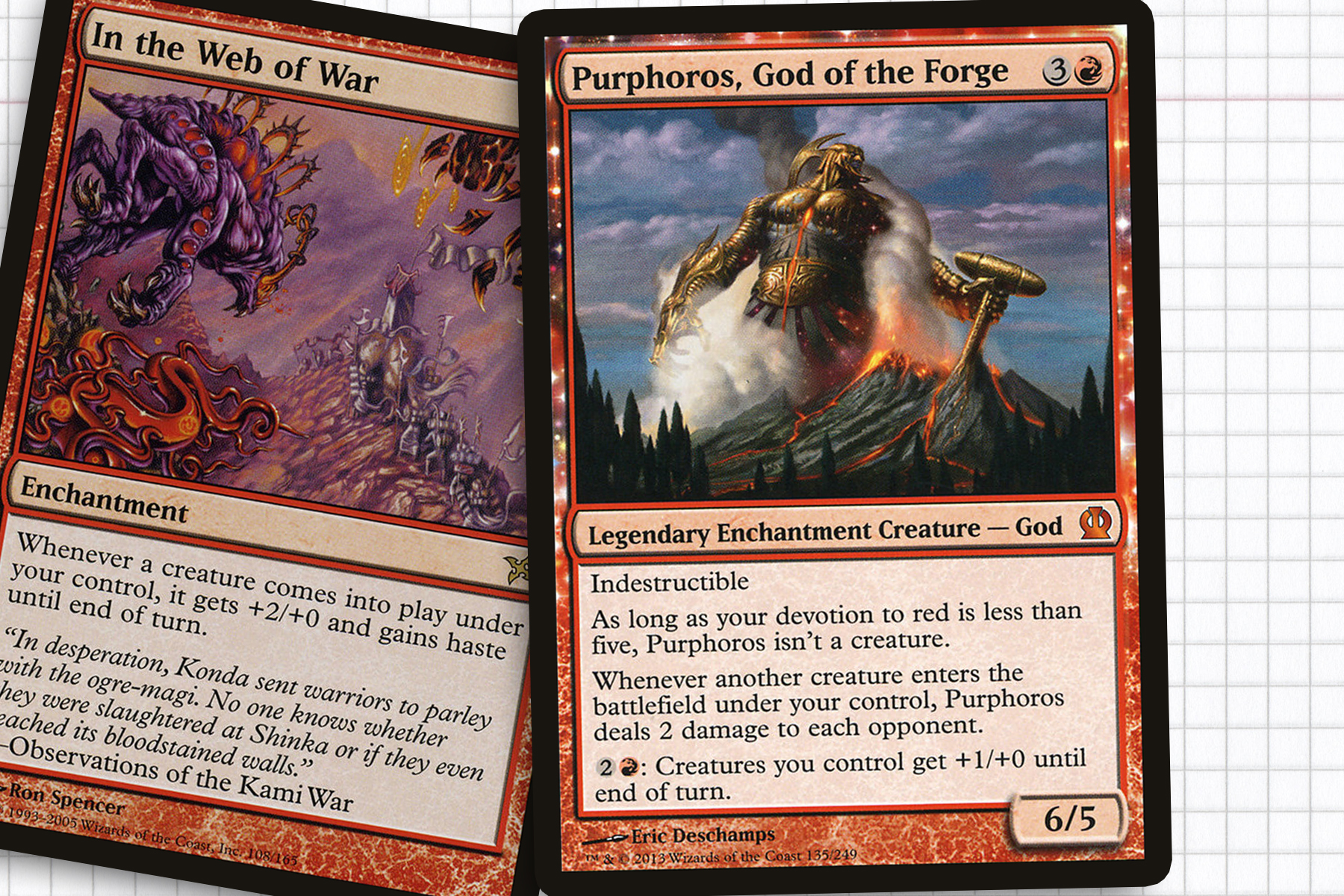
Making an Entrance
While Angelic Chorus can be a nice bonus, the spicy part of this deck is that we’re going to be able to make entering the battlefield matter in ways that the Orzhov color identity alone won’t; with a package of spells like Electropotence, Impact Tremors, Purphoros, God of the Forge, and Warstorm Surge in our deck, not only will we be gaining life or draining life from our opponents, we can also be dealing sizable chunks to creatures or players. Obviously a card like Purphoros begs to be built around and we can honor that request by playing cards like Raise the Alarm, Midnight Haunting, and Lingering Souls, but I wouldn’t want to warp my deck construction too hard in that direction, instead choosing to slowly accrue damage every turn as a long-term plan.
Red also offers us gems from the earlier parts of it’s color pie like Onslaught to tap down blockers and more recent hits like In the Web of War, Boltwing Marauder, and Ogre Battledriver to supercharge our creatures and get damage in quickly. All these pieces together will hopefully mean we can be attacking with Licia as soon as possible everytime we cast her and recouping the life spent to add counters to her.
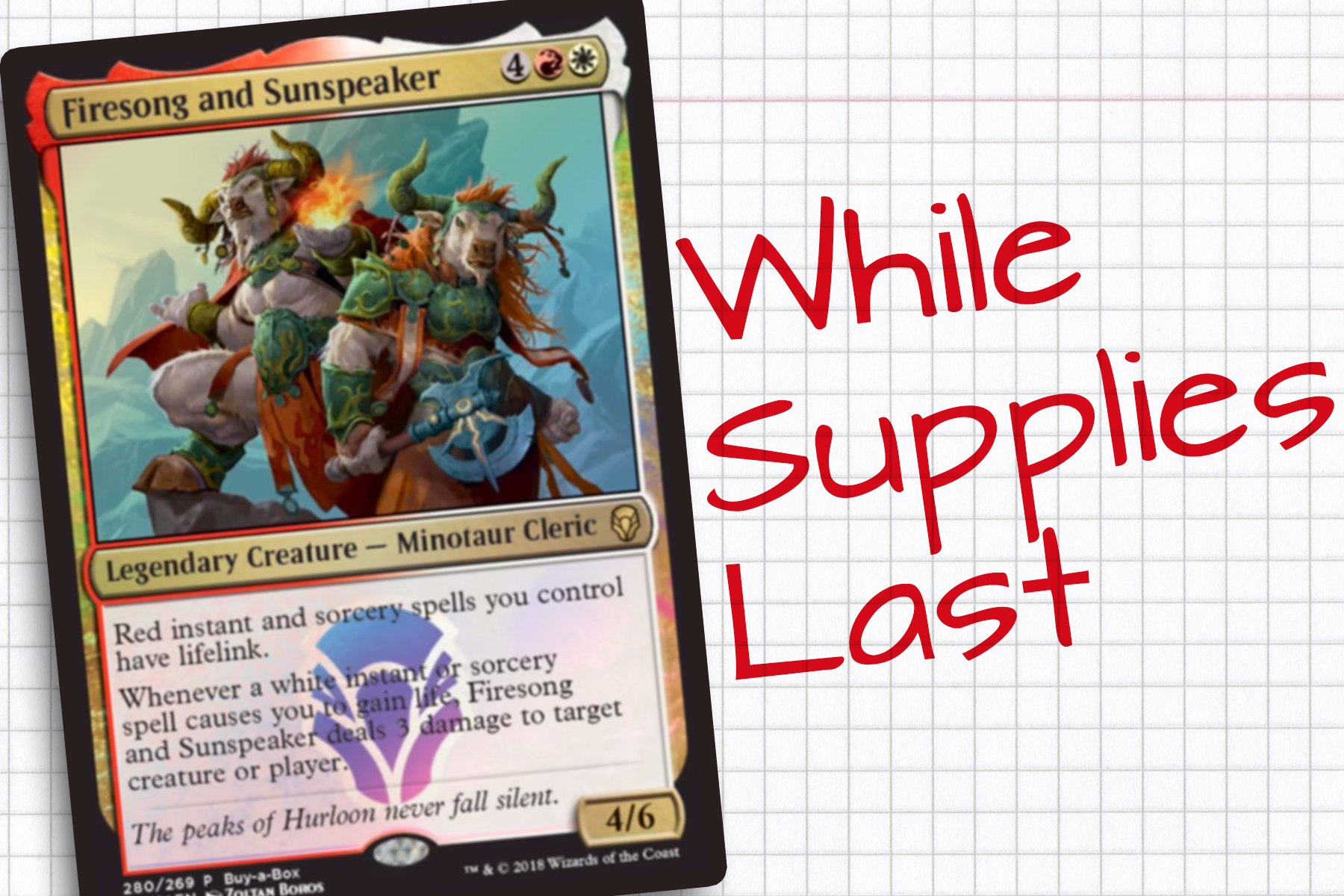
Better Boros
Imagine if all your burn spells did a Lightning Helix impression. This is a deck where Firesong and Sunspeaker could really shine in the other 99, which means I will address the elephant in the room: Firesong and Sunspeaker’s exclusivity. When I read that this was going to be a buy-a-box promo exclusively it didn’t register with me what that meant, because I thought Wizards had learned a long time ago to not have something be available in such limited quantity. Turns out my understanding—that this version was exclusive to the buy-a-box version and a different version was in packs, etc.—was wrong and the internet quickly became The Hunger Games.
I get the problem, I am not especially happy with the steps people looking to acquire this card will need to go through and how parts of the audience with gaps in their knowledge may miss this card’s existence. But this doesn’t have to be Nalathni Dragon. The fix can be easy. Wizards can reprint this card in a supplemental set somewhere down the line if the demand is there, and hopefully people won’t flip tables when they inevitably do. This is the kind of general a lot of people have been asking for in Boros, a unique effect—kudos for using Soulfire Grand Master as blueprint for the design—that doesn’t strictly revolve around combat to win games. I think this card will mostly see play in the other 99, but I love that there is an audience over the moon about making this their general.
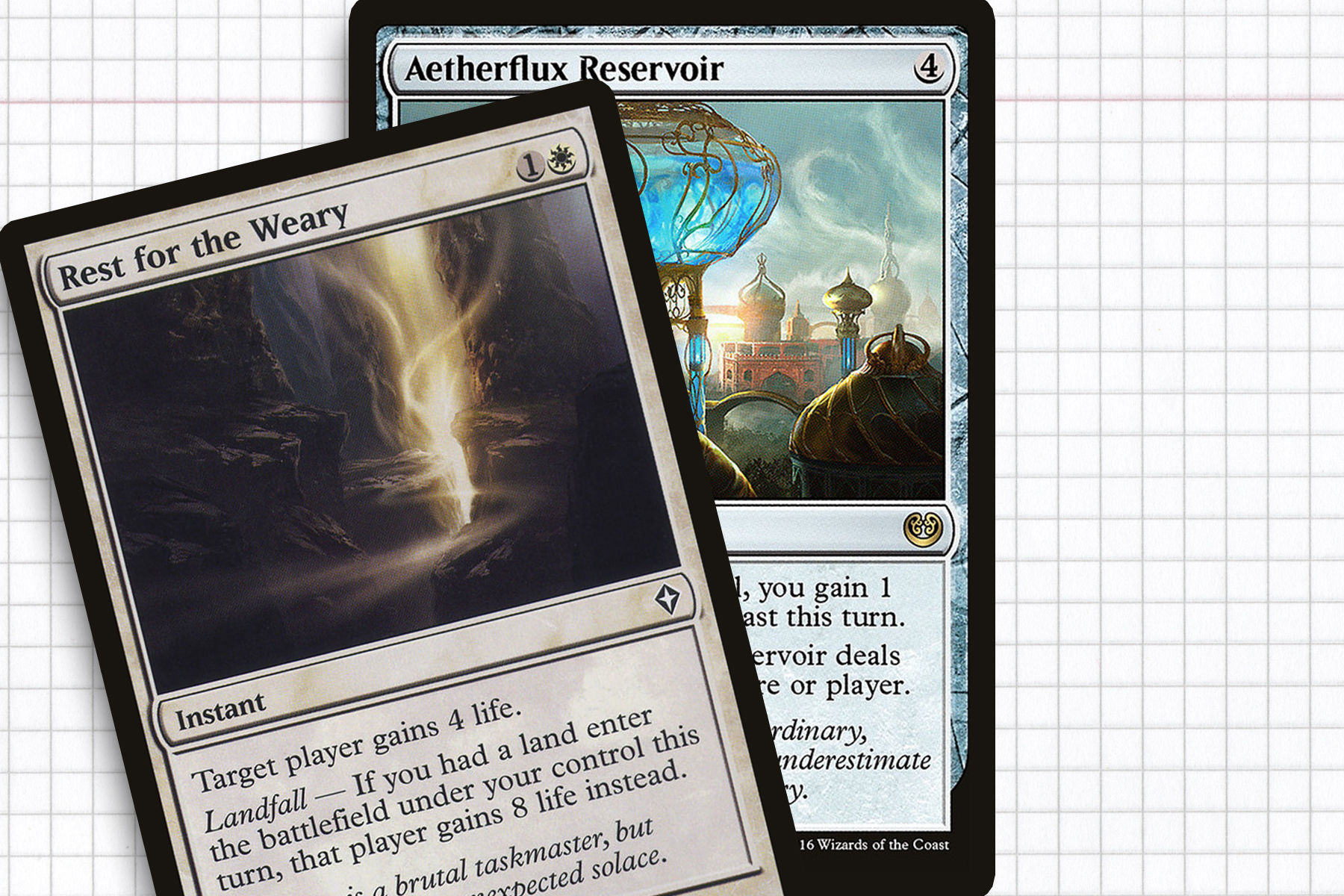
Counting Life
Having a general with lifelink makes the cards that support life gain as a strategy much more viable. The life gain as a win condition strategy is not a horrible backbone for a deck either. While gaining infinite only makes you the target of the nearest Voltron player, keeping your life total high enough that you’re not likely to die without someone commiting all their resources to you can cause you to fly under the radar. Even with the advent of Aetherflux Reservoir it is not uncommon to see players overlooking life totals sitting in the mid forties to low fifties. This might be my favorite way to win for a life gain deck, as 50 life to knock out a player still brings with it a fair amount of tension that cards like Test of Endurance or Felidar Sovereign just don’t. At the end of long game, it can feel more earned if you can threaten to kill any player at the cost of 50 life, while “you win the game” can be anti-climatic.
Either way, to race towards one of these victories, I would employ Rhox Faithmender, as it cuts down the time spent building up you life total dramatically while being a reasonable blocker. Conversely, True Conviction is a win condition in its own right, that still matters if you drop it into even a smaller board state. And finally, it’s going to be important to consider spells that gain you more life than the mana you invested in the. The flag bearers of this are Rest for the Weary, Soothing Balm, and Blessed Alliance in my mind, acting as both a ritual effect and negating several Lightning Bolts worth of damage each.
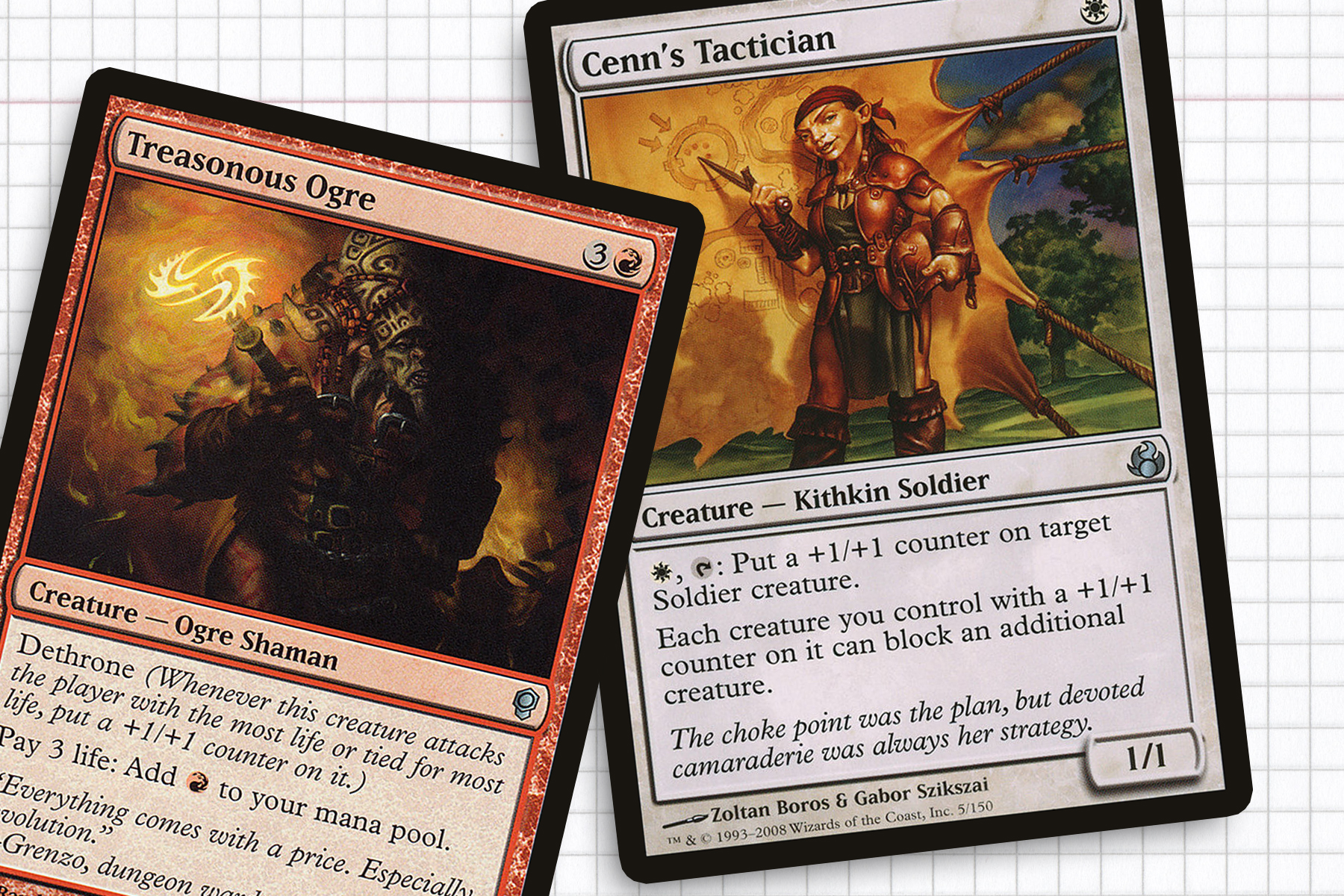
Outlasting Other Players
Finally, I want to have a game plan for what we’re going to do with all the +1/+1 counters we’re looking to generate. While Licia will be able to keep a constant stream of counters on herself, it’s also important to realize that our deck maybe supplying counters to the rest of our team like a reverse Daghatar the Adamant deck. Khans of Tarkir put “+1/+1 counter lords” into our lexicon with Abzan Battle Priest and Abzan Falconer, but Magic’s past supplied us with Cenn’s Tactician, along with the reinforce mechanic. With a strong base, we can look for other interactions like Ion Storm to give us reach, Retribution of the Ancients as removal, and Sunbond as a wonderful interaction of Licia’s abilities to turn any creature into Ageless Entity.
With card like Greed or Erebos, God of the Dead filling a similar role as Underworld Connections or Phyrexian Arena might, we can hopefully use the life we’re generating as a valuable resource, keeping our hand full to keep up with our opponents. We cap off our skeleton with Unspeakable Symbol and Treacherous Ogre, powerful resources to act an additional copy of Licia and a mana generator respectively.
One of the beautiful parts of Commander is just how many options we have available to us if we just think outside of the box. The fun decks for me are the ones that create a unique experience I can’t find in other places. In the next few weeks I should be cracking open the Commander 2017 precons I got at Christmas, but my last semester of college prevented me from opening, this skeleton will likely be a big project coming out of the vampire deck and I am physically excited to get around to it. Until next time, thanks all.

